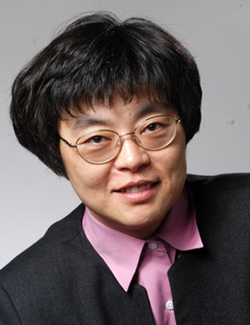It is easy to forget how sizable an accomplishment online meetings are.
Like many OSA members, I spent a lot of time in 2020 at scientific conferences—which were held almost entirely online. By now, such meetings have become so commonplace that it is easy to forget how sizable an accomplishment they are, and how much staff and volunteer effort has gone into sweating the details to keep these events running during a pandemic. I would like to take a moment to express my own thanks for that achievement, and the new levels of engagement it has enabled.
Let’s start with some full-year numbers. After the OFC Conference in March—OSA’s first hybrid in-person/virtual event—the society mounted nine scientific and engineering conferences as all-virtual events during 2020. With the meetings widely (and freely) available, registrations grew to 50,000, more than twice the level of in-person engagement in 2019. The “We Are On” webinar series expanded to 200, attracting 35,000 registrations, with high levels of global participation reflecting OSA’s core value of inclusivity.
For some meetings, the growth was especially striking! The Biophotonics Congress saw a nearly tenfold increase in registrations from 2019 (in-person) to 2020 (virtual). OSA’s leadership decided to run CLEO live; the result was 20,000 registrants and a highly interactive event with more than 5,500 Q&As and more than 2,000 presentations across 20 parallel sessions.
A Zoom platform with custom integrations enabled a rich experience. In addition, all presentations were digitally recorded, transcribed and made available to attendees within 12 hours after each session to encourage global engagement and minimize time-zone issues. It took 50 staff to run and monitor the event. The volunteers delivered an amazing experience and the community feedback was tremendous.
OSA was even able to launch, alongside the all-virtual FIO+LS, an entirely new conference on quantum technology. The inaugural online Quantum 2.0 meeting drew 2,500 registrants—and what would have been standing-room-only audiences in a physical setting.
Behind these numbers lay an incredible OSA staff effort, including tireless work to build the required technical platforms and to find new ways to capture online the networking experience so vital to in-person conferences. All of this came via the power of optical technologies.
One thing that the past year’s experience revealed is that a virtual component can vastly increase a conference’s reach and inclusivity—but that there are aspects of in-person meetings that are very difficult to replicate online. In 2021, OSA will be building on the lessons learned in 2020 to run meetings as hybrid in-person and virtual events, as the pandemic situation allows. The effort by OSA’s staff members to blaze the trail has made this option possible, and I believe the entire optics and photonics community has benefited.
Even amid this effort, OSA’s volunteers and staff continued to work on its core programs—including the selection of the 2021 class of OSA Fellows. A record 261 Fellows nominations were received, and 118 Fellows were selected, representing 24 countries, covering a broad range of career sectors, and including a record number of new women Fellows (19% of the total elected). I invite you to browse the feature beginning on page 34 of this issue of Optics & Photonics News, and get to know these remarkable individuals in our community.
—Constance Chang-Hasnain,
OSA President

